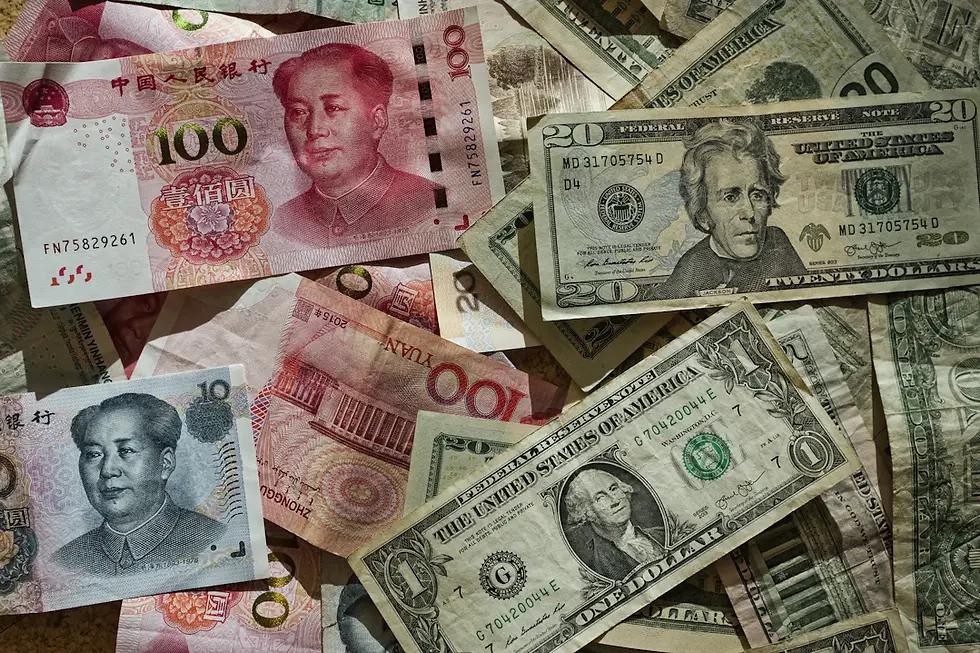Cultural Exchange Through Trade: The Threads That Wove Our World
- Aug 22
- 5 min read

Cultural exchange has been a significant force shaping human civilization for centuries. One of the most notable ways through which cultures have exchanged ideas, beliefs, and knowledge is through trade. From the bustling markets of ancient times to modern e-commerce platforms, trade has acted as a bridge connecting different societies and facilitating the sharing of cultural practices and innovations. In this blog post, we will explore the intricate relationship between trade and cultural exchange, highlighting how this dynamic has contributed to the richness and diversity of our global heritage.
The Roots of Trade: A Historical Perspective
Trade has existed since ancient civilizations first sought to obtain resources they lacked. It began with barter system exchanges where communities traded goods directly, such as grains for textiles. As societies advanced and developed more complex economies, trade evolved alongside them.
The Silk Road: Serving as one of the most famous trade routes, the Silk Road facilitated the exchange of silk, spices, gems, and ideas between the East and West. This ancient trade network enabled travelers and traders to share not only goods but also cultural practices and knowledge.
The Trans-Saharan Trade Routes: These routes linked the Mediterranean to sub-Saharan Africa, promoting the exchange of gold, salt, and cultural wisdom. The spread of Islam into West Africa can largely be credited to merchants trading goods and beliefs.
The Age of Exploration: European explorers, seeking new trade routes to Asia, opened up an entire world of cultural exchanges. This era brought encounters between diverse civilizations, leading to significant cultural fusions, albeit with many ethical complexities.
The Mechanics of Cultural Exchange
So, how does trade act as a vehicle for cultural exchange? Let's break down the mechanics:
1. Goods as Carriers of Culture
Every product we consume carries stories and meanings from its origin. For instance, spices from India not only tantalize our taste buds but also bring hints of Indian culinary traditions. Similarly, fabrics imported from different parts of the world showcase unique weaving techniques, patterns, and colors representing distinct cultures.
2. Travel and Interaction
Trade increases travel and interaction among peoples. Merchants and diplomats frequently traveled across borders, often becoming cultural ambassadors. Their experiences led to personal exchanges of ideas, religious beliefs, and practices.
3. Knowledge Transfer
Trade is not limited to material goods. Significant intellectual exchanges have occurred during trade interactions. Scholars and artisans often shared their discoveries, technological advancements, and philosophies, enriching societies involved.
The Influence of Trade on Language and Arts
As traders navigated new territories, language acted as a crucial component of exchange. Tools like trade glossaries and pidgin languages emerged to facilitate communication. Additionally, this interaction led to the evolution of local dialects, accommodating foreign words and expressions. This linguistic exchange plays a vital role in understanding cultural identities.
Moreover, the arts have flourished due to cross-cultural exchanges prompted by trade. For instance:
Art Movements: The Renaissance was significantly influenced by trade with the Middle East and Asia. European artists incorporated eastern motifs, resulting in stunning works that depicted a seamless blend of ideas.
Architecture: Various architectural styles emerged as traders introduced new techniques, leading to a fusion of designs and a broader acceptance of diverse aesthetics.
Modern Trade: A New Era of Cultural Exchange
The digital age has revolutionized how we conduct trade, creating unprecedented opportunities for cultural exchange. E-commerce platforms have eliminated geographical barriers, allowing for a more expansive sharing of cultural narratives.
1. E-Commerce and the Global Marketplace
Platforms such as Etsy and Amazon enable artisans and businesses to reach an international audience, sharing their unique products and cultural stories on a global scale. This not only fosters appreciation for cultural diversity but also supports local economies.
2. Social Media Connectivity
Social media serves as a tool for cultural exchange as well. Influencers and content creators showcase their backgrounds, traditions, and customs to their followers, encouraging dialogue and understanding. Platforms like Instagram and TikTok allow creators to present their cultural heritage through visual storytelling.
The Impact of Trade on Globalisierung
Global trade has intertwined societies, leading to the phenomenon known as globalization. While globalization has its challenges, including cultural appropriation and the potential loss of cultural identity, it has also opened doors to understanding and appreciating different cultures.
1. Cultural Appropriation vs. Appreciation
As cultures intermingle, the line between cultural appropriation and appreciation can blur. It's essential to understand and respect the origins of cultural symbols, practices, and products. Trade allows for cultural sharing but should be navigated with sensitivity and awareness.
2. The Role of Ethical Trade
This growing awareness has given rise to ethical trade practices, promoting fair wages and sustainable sourcing. By supporting businesses that prioritize cultural integrity and social responsibility, consumers can play a part in fostering mutual respect among cultures.
Creating Lasting Connections: Cultural Exchange Initiatives
Organizations worldwide recognize the importance of cultural exchange in fostering understanding and tolerance. Numerous initiatives and programs aim to promote cultural interactions across borders. These efforts contribute to peacebuilding and collaboration among cultures.
Exchange Programs: Study abroad and cultural exchange programs enable students and professionals to immerse themselves in different cultures, tipping the balance from mere observation to genuine participation.
International Festivals: Events celebrating cultural heritage through food, music, and arts allow communities to share their unique traditions, showcasing the beauty of diversity.
Trade, Knowledge, and the Future
As we look ahead, the relationship between trade and cultural exchange will continue to evolve. Here are a few considerations for the future:
1. Embracing Technology
With advancements in technology, virtual trade and cultural exhibitions will become increasingly commonplace. Innovations such as virtual reality could allow individuals to experience distant cultures in a more immersive manner.
2. Fostering Global Citizenship
As cultural exchange becomes more accessible, individuals can develop a sense of global citizenship. Understanding and appreciating the diversity around us encourages compassion and solidarity, fostering a world where we celebrate our differences rather than fear them.
Giving Voice to Unheard Cultures
Trade has the potential to act as an equalizer. For marginalized voices and cultures, trade can provide a platform for ownership and storytelling. By amplifying these underrepresented narratives, trade can play a pivotal role in rectifying historical injustices.
Unlocking the Power of Cultural Exchange
Cultural exchange through trade extends far beyond the mere exchange of goods. It's a profound journey of connection, understanding, and growth that shapes our societies in multifaceted ways. Consider how your own life has been influenced by cultural interactions, whether through the foods you enjoy, the art that inspires you, or the traditions that resonate with your identity.
As we embrace the ongoing evolution of trade and cultural exchange, let us commit ourselves to fostering respect, knowledge, and appreciation for every culture's unique contributions. Together, these threads will continue to weave the rich tapestry of our global community.
FAQs
What is the main theme of the blog 'Cultural Exchange Through Trade'?
The main theme of the blog is to explore how trade has facilitated cultural exchange, shaping human civilization and contributing to the richness and diversity of global heritage.
What historical trade routes are mentioned in the blog?
The blog mentions the Silk Road and the Trans-Saharan Trade Routes as significant historical trade routes that promoted cultural exchange.
How does trade act as a vehicle for cultural exchange according to the blog?
Trade acts as a vehicle for cultural exchange by carrying goods that embody cultural stories, increasing travel and interaction among people, and facilitating knowledge transfer during trade interactions.
What role does modern technology play in cultural exchange through trade?
Modern technology, particularly e-commerce and social media, has revolutionized cultural exchange by eliminating geographical barriers and allowing for greater sharing of cultural narratives and products on a global scale.
What are some initiatives that promote cultural exchange as mentioned in the blog?
The blog mentions exchange programs and international festivals as initiatives that promote cultural interactions and foster understanding and collaboration among different cultures.




Comments